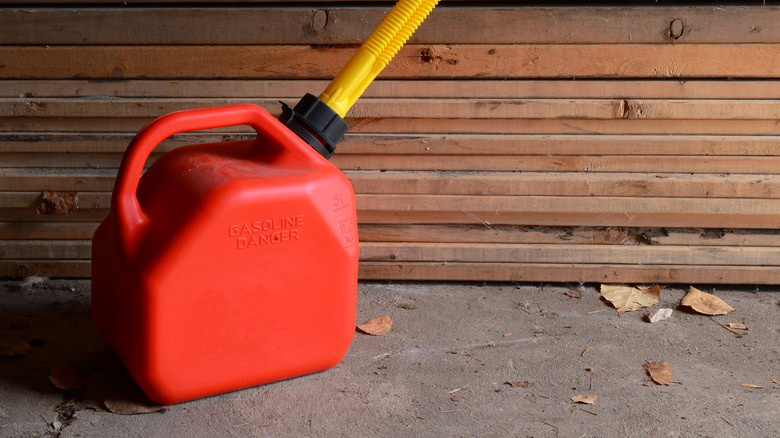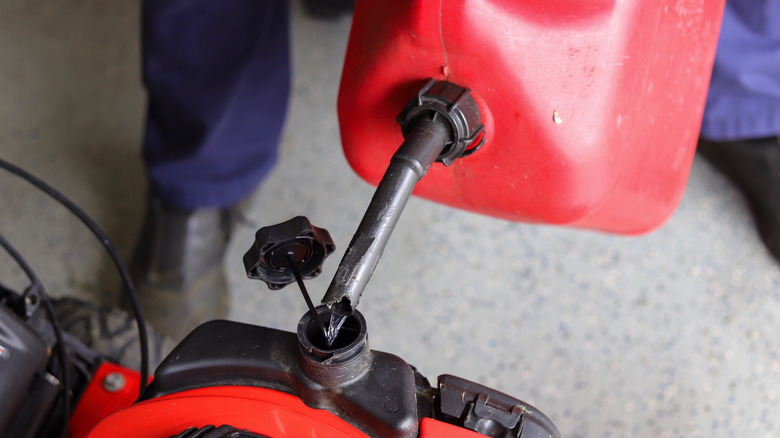What's The Best Way To Dispose Of Old Gasoline That Wasn't Used In A Lawn Mower?
Given the number of gasoline-operated things we accumulate in a lifetime — mowers, string trimmers, pressure washers, snow blowers, tillers, and many more — it's surprising that anyone should ever have unused gas get so old that it starts to go bad. But it does happen sometimes. Perhaps a second, forgotten can of gas has been hanging around too long, or a large can was over-full at the end of fall. It takes only about three months for gas to start significantly breaking down if it's been kept in an imperfectly sealed container or otherwise exposed to heat, light, oxygen, or moisture, so you should always check your lawn mower for old gasoline before your first mow of the year.
Old fuel contains sediment, gummy substances, acids, and slime that can cause poor performance and engine damage. It's best to get rid of it and start fresh, and that usually means taking it to a disposal facility, though there are a couple of DIY approaches.
Your best bet for disposing of old gasoline is a nearby municipal recycling center or hazardous waste disposal facility. Recycling centers don't always offer this service, and when they do, it might be only on a periodic schedule. Call or visit your local facility for details. Hazardous waste disposal facilities might also work on a schedule, so it's best to check with them as well before showing up with cans of old gas. In some areas, local governments and other organizations occasionally hold community events for gasoline recycling and other services. And some fire stations and auto repair shops are able to take and dispose of old gas.
Disposing of old gas at home
Getting rid of old gasoline yourself is trickier and won't work in many circumstances. For small quantities of gasoline, you can move it outdoors and allow it to evaporate. You can accelerate this process by pouring the liquid into a shallow, disposable metal pan. This must be done outdoors and away from sources of ignition or disturbance, and where the fumes won't be inhaled.
A safer and sometimes faster solution is to mix the old gas with fresh gas and run it in the engine of lawn care equipment (especially if you haven't properly added fuel stabilizer to your mower's last tank of gas) or in older cars that aren't computer-controlled. This works only with gasoline that isn't contaminated by rust and sediment, which has to be disposed of at a facility. There are various formulas for how much old gasoline can be mixed and used with fresh gas, but combining one part old gas with five parts new should be safe, according to the Maine Department of Environmental Protection. As long as the fuel hasn't suffered too much from oxidation or separation, it should combust more or less normally.
There are some things not to do as well. Don't use old gasoline, or any gasoline, to kill weeds. Pouring gasoline on the ground is both dangerous and illegal. It's also illegal to pour gasoline down a drain, which can seriously contaminate the water supply. And don't burn it outside of an internal combustion engine, because the thing you end up combusting might be yourself.

